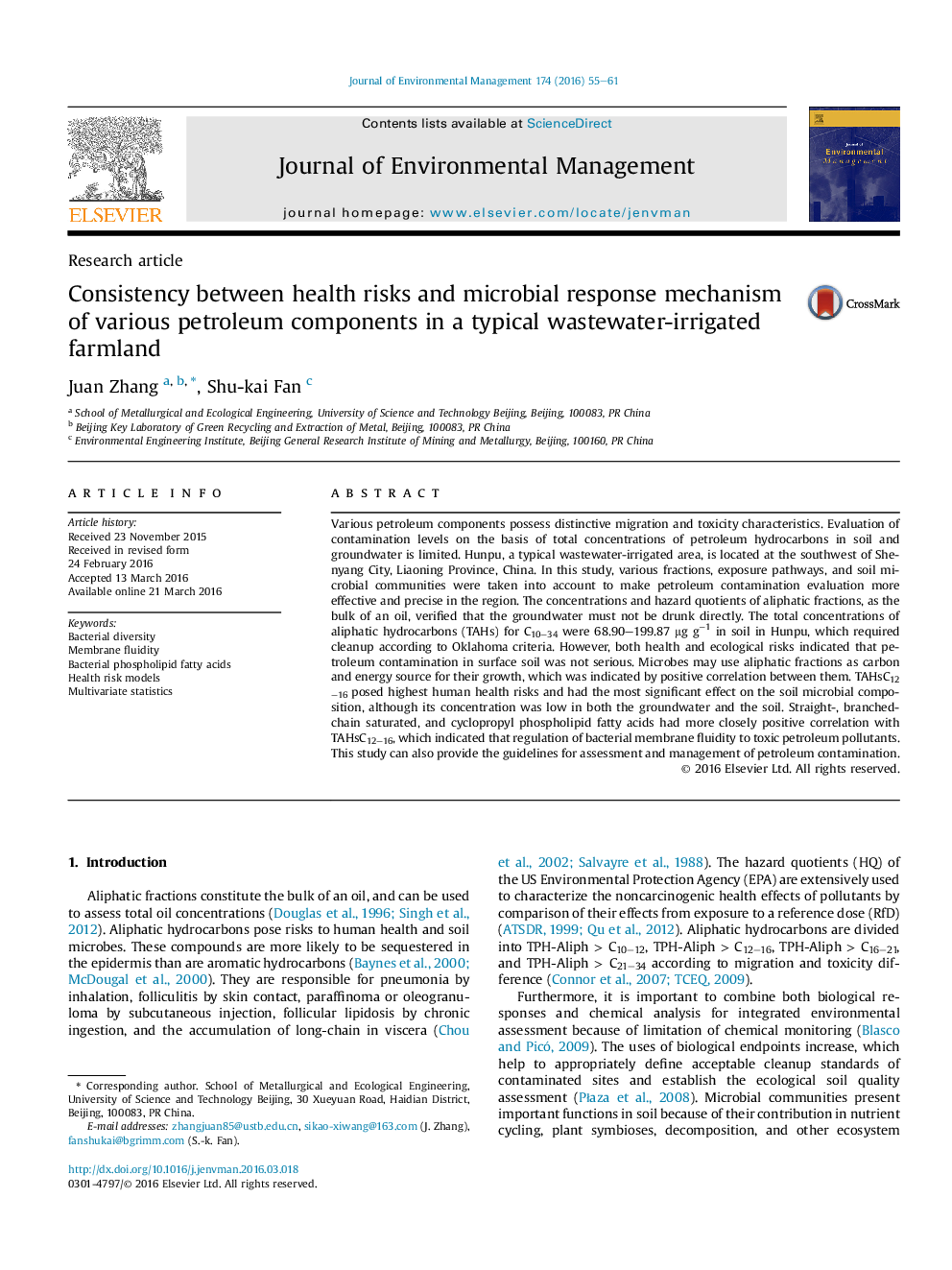| کد مقاله | کد نشریه | سال انتشار | مقاله انگلیسی | نسخه تمام متن |
|---|---|---|---|---|
| 1055392 | 1485238 | 2016 | 7 صفحه PDF | دانلود رایگان |
• Human health and soil microbes consistently verified highest toxicity of C12 to C16.
• Various pathways of various petroleum fractions contamination were identified.
• Groundwater posed most health risks to local residents by drinking directly.
• Aliphatic hydrocarbons can positively stimulate soil microbes as carbon and energy.
• Bacteria reply to toxic petroleum pollutants by regulation of membrane fluidity.
Various petroleum components possess distinctive migration and toxicity characteristics. Evaluation of contamination levels on the basis of total concentrations of petroleum hydrocarbons in soil and groundwater is limited. Hunpu, a typical wastewater-irrigated area, is located at the southwest of Shenyang City, Liaoning Province, China. In this study, various fractions, exposure pathways, and soil microbial communities were taken into account to make petroleum contamination evaluation more effective and precise in the region. The concentrations and hazard quotients of aliphatic fractions, as the bulk of an oil, verified that the groundwater must not be drunk directly. The total concentrations of aliphatic hydrocarbons (TAHs) for C10–34 were 68.90–199.87 μg g−1 in soil in Hunpu, which required cleanup according to Oklahoma criteria. However, both health and ecological risks indicated that petroleum contamination in surface soil was not serious. Microbes may use aliphatic fractions as carbon and energy source for their growth, which was indicated by positive correlation between them. TAHsC12–16 posed highest human health risks and had the most significant effect on the soil microbial composition, although its concentration was low in both the groundwater and the soil. Straight-, branched-chain saturated, and cyclopropyl phospholipid fatty acids had more closely positive correlation with TAHsC12–16, which indicated that regulation of bacterial membrane fluidity to toxic petroleum pollutants. This study can also provide the guidelines for assessment and management of petroleum contamination.
Figure optionsDownload as PowerPoint slide
Journal: Journal of Environmental Management - Volume 174, 1 June 2016, Pages 55–61
